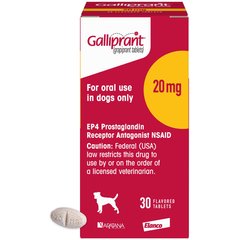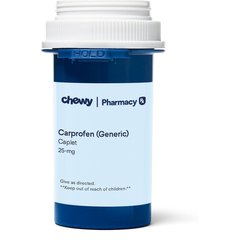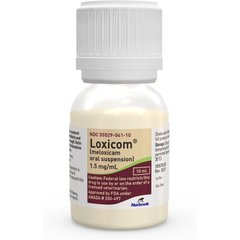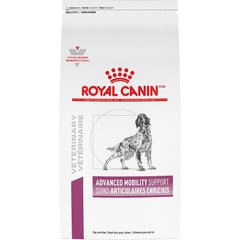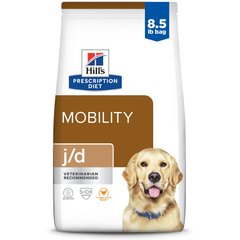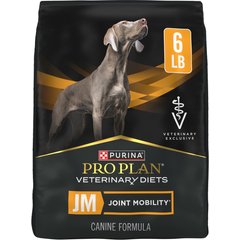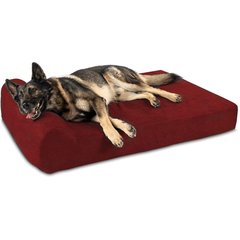Dog Arthritis Treatment: How To Help a Dog With Arthritis
AzmanJaka/iStock / Getty Images Plus via Getty Images
Arthritis in dogs is a common condition that causes joint pain, affecting most pups as they age. Arthritis is inflammation, swelling, or tenderness in one or more joints that can occur due to genetics, age, infection, disease, injury, or overuse.
Let's look at how you can help your furry friend if they are suffering from arthritis.
Dog Arthritis Treatment
There are several things you can do around your home and in collaboration with your veterinarian to help dogs with arthritis manage their pain and improve their joint health.
Using a multimodal approach—combinations of different types of medications and joint supplements—to treat arthritis in dogs is the best way to ensure quality of life and successful treatment.
Making changes to your pup’s daily life and surroundings can help, too. Always speak with your vet before implementing a treatment plan for your pup.
Here are some tips on how to help a dog with arthritis.
Dog Weight Management
Weight management is an important part of relieving dog joint pain.
Obesity contributes to increased pressure on the joints, which leads to pain and discomfort. Controlling your dog’s weight can help ease their pain as they age.
Speak with your veterinarian about the ideal weight for your pet and long-term weight management.
Exercise
Physical therapy, massage, and daily exercise can be helpful for dog joint pain relief.
Consider daily exercise in moderation.
Start with short walks, up to 10 or 15 minutes, three to four times per day. Following the same routine every day without high-impact activities (such as ball chasing, running, or jumping) is key to giving your dog some exercise without increasing stress or pain.
Speak with your veterinarian about consulting a certified small animal physical rehabilitation practitioner. They can lead your dog through therapeutic exercises like passive stretching, range of motion exercises, controlled walking with obstacles, and using underwater treadmills.
Physical Therapy
Physical therapy in dogs can be used to help restore or improve mobility, function, and quality of life. The goals of physical therapy may include weight loss, reduced pain, reduced inflammation, increased range of motion, improved balance, and increased muscle strength. Some common physical therapy techniques include:
-
Passive range of motion
-
Treadmill
-
Underwater treadmill
-
Massage
-
Therapeutic exercises
Arthritis Medicine for Dogs
While there isn’t a cure for arthritis in dogs, there are a few medications that can help relieve joint pain and inflammation. These include:
-
NSAIDS—Nonsteroidal anti-inflammatory drugs (NSAIDs) play a major role in controlling dog joint pain and inflammation. Galliprant® (active ingredient grapiprant) is a prescription NSAID used in the management of pain and inflammation associated with osteoarthritis in dogs. Other prescription NSAIDs include carprofen and meloxicam. These prescription medications are the safest options for controlling pain and inflammation compared to over-the-counter, non-veterinary products.
-
You may see the full results after three months of daily use. Speak with your veterinarian about which product and dosage is right for your pet.
-
-
Additional pain medication—There are other non-NSAID pain medications your vet may recommend, usually to augment NSAID therapy. Those may include gabapentin or tramadol. Also, muscle relaxors such as Methocarbamol may be sometimes be added to pain protocols.
-
Adequan injections—Adequan®, an FDA-approved series of injections performed by your veterinarian, has shown to help with inflammation and to increase joint lubrication.
-
Librela™—Librela™ is the first and only anti-nerve growth factor (NGF) monoclonal antibiotic (Mab) therapy used to treat the pain associated with osteoarthritis in dogs. It is a once-a-month injection given by your veterinarian.
-
Corticosteroids—In some cases, steroids may be used short or long term to help with inflammation and pain of arthritis. Steroids and NSAIDs should never be used together as this can lead to side effects such as stomach ulcer. Tell your veterinarian what medications your pet is on before adding steroids to their protocol.
Dog Arthritis Supplements
When looking for dog arthritis supplements, look for ones that contain:
-
Methylsulfonylmethane (MSM)
-
Glucosamine hydrochloride
-
Long-chain omega-3 fatty acids
-
Eicosatetraenoic acid (ETA)
-
Eicosapentaenoic acid (EPA)
-
Docosahexaenoic acid (DHA)
-
Chondroitin sulfate
-
Green-lipped mussel
All of these are known for supporting dog joint health.
In breeds that are predisposed to arthritis, it’s recommended to start joint supplements as early as 8 weeks of age. These breeds are most commonly at risk for joint issues:
Supplements or any dietary additives can cause side effects such as gastrointestinal (GI) upset so be sure to talk to your vet before giving them to your pup.
A few joint supplements formulated specifically for dogs include:
Dog Food for Arthritis
While some over the counter (OTC) large breed diets may contain omegas or glucosamine and chondroin, there are prescription veterinary diets specifically formulation for joint mobility:
Alternative Therapies
As a pet parent of a dog with arthritis, you may want to consider alternative therapies. These treatments can be used in conjunction with primary treatments to help relieve dog joint pain.
Some alternative therapies may include:
-
Acupuncture—Acupuncture is the insertion of thin needles into the skin at certain points of the body. There is clinical evidence that acupuncture, in combination with a multimodal therapy approach to arthritis, reduces chronic dog joint pain.
-
Laser therapy—Low-level lasers use penetrating light to bring oxygen and blood flow to joints to decrease inflammation and pain.
-
Shockwave therapy—Shockwave therapy uses high-intensity sound waves to help decrease inflammation and treat arthritis.
-
Electrical stimulation—Also known as neuromuscular stimulation, electric stimulation is used to strengthen muscles and help decrease muscle wasting in dogs with mobility issues. Another form, transcutaneous electrical nerve stimulation (TENS) can be used to help provide pain relief.
Lifestyle Modifications
Making a few basic modifications to your home can help alleviate your dog’s pain and anxiety.
-
Nonslip rugs—Dogs with arthritis and joint pain may have a fear of walking on slippery surfaces like hardwood or tile because they have limited mobility, and they expect to feel pain if they fall.
-
Using nonslip mats, rugs, and carpets on slippery floors can help your dog get around the house more without the fear of slipping. Placing nonslip rugs at the base and the top of staircases, and near couches and beds, will help decrease dog joint pain by lowering the impact on their joints.
-
-
Orthopedic dog beds—Comfortable dog beds that are low to the ground and have orthopedic support will ease your dog’s joint pain and allow them to get back up without struggling. Make sure that your pet’s favorite spots to rest and sit have thick bedding with nonslip mats to prevent injury or pain when they try to stand up.
-
Blocked-off stairways—Stairs should be blocked off with a pet gate to ensure your dog’s safety when they’re not under your direct supervision. You can also add non-slip grips to stairs.
-
Dog-lift harness—Consider purchasing a sling, or dog-lift harness, to assist with mobility around the house. This type of harness can help ensure proper and safe movement through certain areas for pets severely affected by hip, knee, shoulder, and elbow arthritis.
The right arthritis protocol for your pup likely involves multiple medications, treatments, or aids to help keep them comfortable and happy.
Quality of life and pain-free days are the goal for your furry companion. Speak with your vet about the best combination of therapies and arthritis medicine for your dog.

